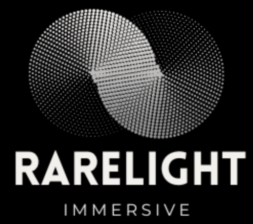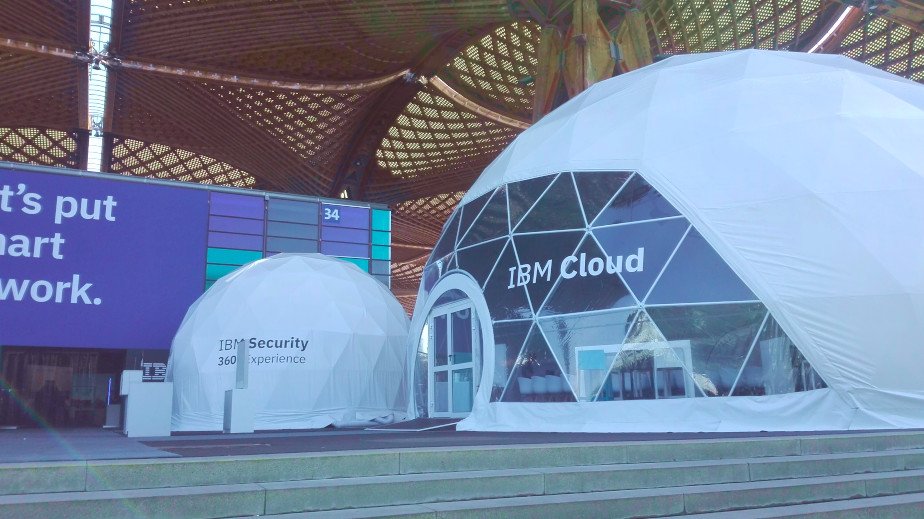It was a sunny October day when more than 400 guests including top DHL management from the US were invited into a special VR dome constructed to go… on a trip to space and fly with DHL shuttle. Sounds awesome, right? This is just the beginning of the story of how we helped to organise a big corporate event for launching DHL presence using VR technology.
Our 8-minute-long animation was screened in 360° format on 900m2 surface inside the dome. After this event, we’ve received feedback from our friends at DW GROUP saying: “Everyone, from the top managers to the security team, was awed by your production”. Moreover, this experience was repeated to IBM when they were looking for a creative way to present their security cloud benefits. IBM had a 360° movie showcasing their X-Force Command Center which was ideal to present in the Virtual Reality dome.
So, here we are going to prove why VR is the greatest tool for making presentations in comparison with standard 2-D slides.
79% agree that “most presentations are boring.”
Shorter audience attention spans and information fatigue mean that people have less and less time for less-than-engaging presentations. According to Presentation Panda survey, most modern presentations don’t attract viewers’ attention. From poor image choices to lengthy bullet points we can talk about the many ways a presentation can go wrong. As a result, if your storytelling, infographics, or video doesn’t add value for the audience you will fail to effectively communicate information which may pose an organizational, brand or even financial risk.
Understanding your audience means not just understanding their needs but also being empathetic to the way you present. With the advancing technologies in the presentation space, we can tell our stories in interactive, new and engaging ways. Using 360° content (photos, videos, or virtual environments), VR adds a new dimension to standard presentations, whether that’s a conference, meet up, networking event or a pitch in front of investors. Once you put on a VR headset, it looks and feels as if you are actually at the event. The viewer is completely surrounded by your virtual world. Besides concept presentations, it can be used to prepare VR showreel, mood board, or 3-D tours. Now imagine that you can invite even hundreds of users inside the 360° space and they can be inside the dome, watch and interact with the action around them.
Who can use it?
The way we consume and present information and data is changing. Marketers and CEOs can use VR presentations to give a better context as to what their product really looks like and works. Especially, these types of presentations can seriously change design, engineering, and architecture industries. With 360° images and videos of your project, viewers will be able to immerse themselves in virtual reality and feel all the details of your design on the scale in which they are performed. Various consumer goods brands can more accurately display where, when and how their product is best experienced.
Scientific researchers or start-up founders can provide the audience with a more complete perspective and physical view of works or pitch decks they have. VR solutions help to foster stronger feelings of empathy and more importantly help drive change. Imagine how this may impact on business angels or incubators and their decisions to invest in your idea.
Let’s say, you want to convince investors to buy shares of a new shopping center. Ordinarily, you would have to provide 3D renders, architectural drawings or a physical layout of the complex for that meeting, which doesn’t give a clear picture of how it will look like. But if you bring VR glasses and show investors a prepared a 3D tour, for sure you will achieve a completely different effect due to the feeling of immersion and presence.
Dozens of other product or service categories can also leverage this new 3D format to forge stronger bonds with their target audience. Finally, what is perhaps most important is that a user is given control to engage and interact with content like never before. It has the potential to be a key tool that increases audience interest and consequently, revenues and brand loyalty.
What do you need to create a presentation for VR dome?
VR presentation helps to remember more information by using visible three-dimensional forms. They are complemented by visual and sound effects to enhance entertainment. So it’s time to move on to the technical part. Here we would like to give you some tips on prototyping your content using the example of VR Dome experience.
VR dome constructed for IBM presentation
First thing is to download the Fulldome OS Viewer – the prototyping tool that will help you see how your content is going to be viewed inside and how the system works.
When downloaded make sure you’ve unzipped it and open the folder. Then, go to the DomeViewer/binaries/Win64/local/video folder and upload your produced videos inside. Make sure all content is in the mp4 format. To ensure the movie has thumbnail picture in the system you have to upload the .png file with the same name as the .mp4 file to this folder. Then go back to the main folder and run Hyperdome.exe.
You are greeted with the main screen in the fulldome format. In the physical dome, you can control the system with the Xbox gamepad. In the Fulldome Viewer OS however, you can use your PC keyboard with the key mappings.
This functionality allows to prototype your movie and when a unit arrives you can use it with the supplied Fulldome OS software to quickly calibrate the experience.
Would you like to prepare a presentation without a dome? We are ready to create the necessary content for your virtual presentation – your role is only to impress future customers. Just drop us a line to discuss details.
Some words about the price
The cost of organizing VR presentations depends on several factors. To answer this question, we would like to request the following information:
- What is your idea and what exactly would you like to present;
- Preferable duration of VR presentation;
- Date, time and place;
- What content you want to show;
- The maximum number of viewers who will be invited;
- Whether you want to make a presentation with 3D glasses provided for each viewer or not.
If you are inspired by the idea to make a VR presentation and would like to make it real, contact our team.

